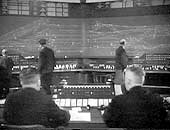Additional information: Peter Hayes comments that an excellent article on the working of York station in the Sep-Oct 1949 and Nov-Dec 1949 editions of "The Railway Magazine". The article is titled "Twenty-four hours at York" written by O.S. Nock and it would be an excellent companion to the video as it has a map showing railways in the York area, a very detailed layout of York Station, a control graph of lines south of Northallerton, principle streams of traffic around York and thirteen photographs of York showing as it was.
The article covers 24 pages which includes the photographs and is well written. The explanation of the working of York station is well worth the effort to try and find the magazines.
Review (from The Reel Image website):
This is a British Transport Film with atmospheric music by Leighton Lucas, written commentary by Paul Le Saux and directed by J. B. Holmes is yet another nostalgic portrait of a vanished Britain. I deduce from the fashions and cars that the film was shot in the Fifties and the films black and white photography is eminently suitable for the greyness of that time. Starting with a long shot of York Minister through the morning mists, workers are seen setting off for the daily shift on hordes of bicycles or waiting at bus stops for the line of buses that never seem to come.
We wander down the mercifully deserted narrow streets of York while the commentator tells us a little about the city's history which dates back to the Romans and beyond. But all this is a preamble to the real subject of the film, York and its Railway. Now the commentary is split between our original guide and the voice of the York Station Master equipped with a Northern accent "wi nowt taken out" who makes an appearance complete with bowler hat and enters his office. He then proceeds to tell us about the organization of his day with cutaways to telephonists and a "teleprinter place'. All this is interspersed with film of the busy station and the arrival and departure of various steam trains.
Looking at the steam filled station, it is little wonder that trains which used to be some of the most glamorous machines ever built, have not lost their glamour. in this film, the smoke and steam from their stacks creates an instant atmosphere of mystery and romance. our new electric and diesel trains are too antiseptic for that. can you imagine Brief Encounter taking place in any of our modern day station buffets (if you can find a station buffet).
We move to the huge Clifton sidings and from there to the workshops before returning to the station and exploration of its many and varied activities. Our hero now swops his bowler for a shiny topper, the symbol of his authority as he describes it. We see a train arrive and the preparations that go into turning it round, cleaning it out and sending it off on the next step of its journey. Then our original narrator takes over and in his company we visit the smaller stops and the country people whom the railway used to serve. But even here we are made aware of the lines that are being closed down and torn up.
And so we move from morning to afternoon and the Station master continues his tour of inspection. Passengers come and go, kids jot down train numbers, meetings are held to insure the smooth running of the railway and all the time the great trains come and go until we reach the evening and the workers start for home. The station too gears up to cope with homeward bound traffic and the film draws to a gentle conclusion with a final nod to the Northern men of past who made such a contribution to Railway history and who are commemorated in the nearby Railway Museum. All Railway life is here and if you love railways and railway stations, then this is a perfect little film for you.
The print is very acceptable for the films age and the sound is first class.
This review refers to an 8mm print.
Return to Main Index
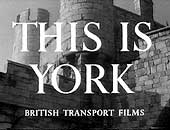
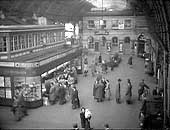
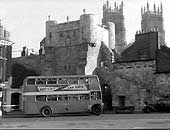
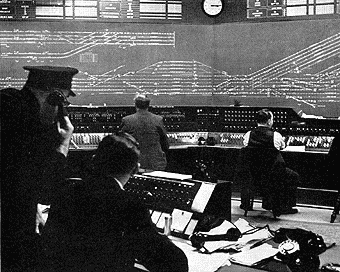
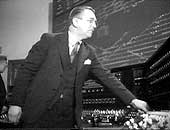

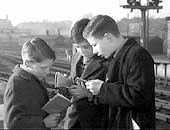
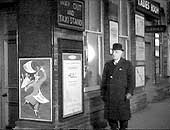
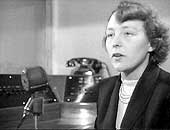

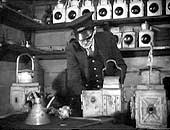

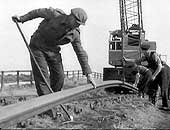

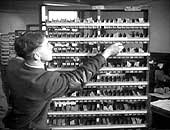
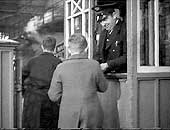
 Actual screen shots reproduced by kind permission
Actual screen shots reproduced by kind permission